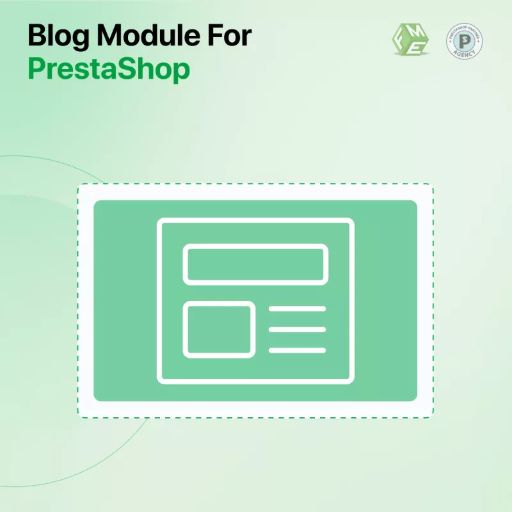Migrating your existing blog to the Blog Module PrestaShop is a smart decision if you’re looking to streamline your content management while enhancing your store’s functionality. The Blog Module PrestaShop offers seamless integration with your eCommerce site, better tools for managing posts, and improved features for PrestaShop blog accessibility.
In this guide, we’ll walk you through the step-by-step process to ensure a smooth migration. Whether you’re moving from WordPress, Joomla, or another platform, this guide will make it simple and easy to follow.
Why Migrate to PrestaShop Blog Module?
The Blog Module PrestaShop is designed specifically for PrestaShop users, offering several advantages:
- Seamless Integration: It works perfectly with your online store.
- Improved Accessibility: The module ensures high PrestaShop blog accessibility for all devices.
- Enhanced Features: It includes SEO tools, customization options, and analytics.
- Time Efficiency: Managing your blog and store in one platform saves time.
Pre-Migration Checklist
Before you start, ensure the following:
- Backup Your Existing Blog: Always back up your current content to prevent data loss.
- Choose a Reliable Blog Module: The Blog Module PrestaShop should be compatible with your store’s version.
- Test Your Current Blog: Check for broken links or outdated plugins that might complicate the migration.
Step 1: Install the PrestaShop Blog Module
To begin, install the Blog Module PrestaShop from the PrestaShop Addons Marketplace:
- Go to your PrestaShop admin dashboard.
- Navigate to Modules and Services and search for the Blog Module.
- Download and install the module.
- Configure basic settings, such as blog categories, tags, and layouts.
Step 2: Export Content from Your Existing Blog
Most blogging platforms, such as WordPress or Joomla, allow you to export content easily. Follow these steps:
- Go to your blog’s admin panel.
- Select Export Content or a similar option.
- Save the export file in XML or CSV format, depending on what the platform supports.
Ensure that this file contains all blog posts, images, and metadata.
Step 3: Import Content into PrestaShop Blog Module
Once your content is exported, import it into the Blog Module PrestaShop:
- Access the blog module in your PrestaShop dashboard.
- Navigate to the Import Section.
- Upload your exported file.
- Map fields such as titles, body content, and categories to match PrestaShop’s structure.
The module will handle most of the heavy lifting, making the process quick and straightforward.
Step 4: Optimize Blog Accessibility
After migration, focus on improving PrestaShop blog accessibility for all users:
- Use Responsive Themes: Ensure your blog looks good on mobile, tablet, and desktop.
- Add Alt Text to Images: Alt text helps visually impaired users and improves SEO.
- Organize Content: Use clear headings and categories for easy navigation.
The Blog Module PrestaShop makes it easy to adjust these settings from the admin panel.
Step 5: Redirect Old URLs
To retain your search engine rankings and avoid broken links, set up URL redirects:
- Use the 301 Redirect option in PrestaShop or your hosting provider.
- Redirect old blog URLs to their new locations in the PrestaShop blog.
- Test the redirects to ensure they work correctly.
This step is crucial for maintaining traffic and SEO value.
Step 6: Test Your New Blog
Before going live, thoroughly test your blog to ensure everything works as expected:
- Check Content: Verify that all posts, images, and metadata are correctly imported.
- Test Functionality: Ensure links, forms, and navigation menus work seamlessly.
- Load Speed: Use tools like Google PageSpeed Insights to optimize your blog’s performance.
Step 7: Launch Your PrestaShop Blog
Once everything is tested and optimized, launch your blog:
- Update your blog’s settings, such as SEO titles, meta descriptions, and tags.
- Announce the migration to your audience via email or social media.
- Monitor analytics to track your blog’s performance on the Blog Module PrestaShop.
Tips for a Successful Migration
1. Enhance SEO
Take advantage of the SEO tools in the Blog Module PrestaShop:
- Use focus keywords like “Blog Module PrestaShop” in titles and meta descriptions.
- Add internal and external links to your posts.
2. Focus on Usability
Make your blog user-friendly with intuitive navigation and clear call-to-action buttons. Improving PrestaShop blog accessibility ensures readers can easily engage with your content.
3. Regular Maintenance
Keep your blog updated by:
- Adding fresh content regularly.
- Monitoring for broken links or outdated information.
Benefits of Using PrestaShop Blog Module
Migrating to the Blog Module PrestaShop offers:
- A unified platform for managing your store and blog.
- Better tools for improving PrestaShop blog accessibility.
- Enhanced SEO features to increase your blog’s visibility.
- A professional appearance that aligns with your store’s branding.
Common Migration Challenges and How to Overcome Them
Challenge: Data Loss During Migration
Solution: Always back up your data before starting the migration process.
Challenge: Compatibility Issues
Solution: Choose a blog module compatible with your PrestaShop version.
Challenge: Broken Links
Solution: Set up proper redirects and test all links before launching.
Conclusion
Migrating your blog to the Blog Module PrestaShop doesn’t have to be complicated. By following this step-by-step guide, you can ensure a smooth transition and take full advantage of the module’s features. With better tools for PrestaShop blog accessibility and seamless integration, your blog will not only look professional but also perform better in search rankings.
Start your migration today and watch your blog reach new heights!
